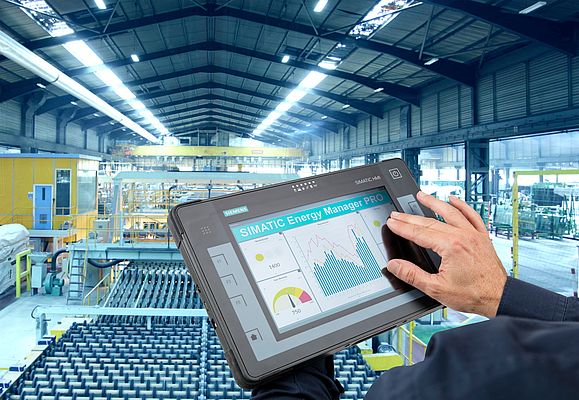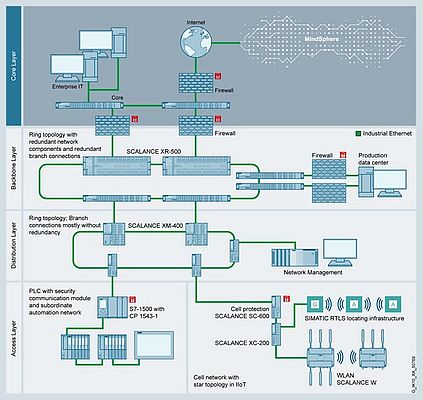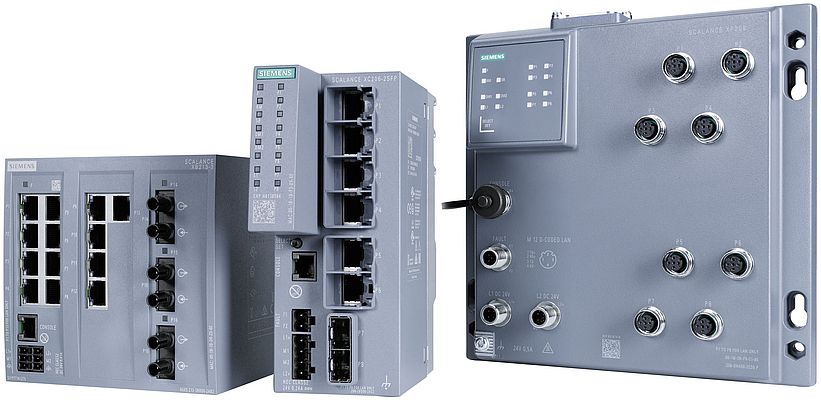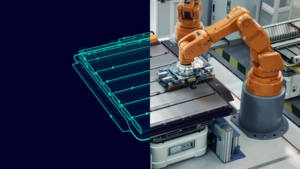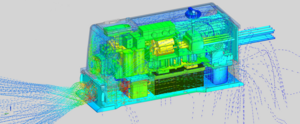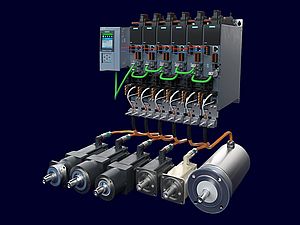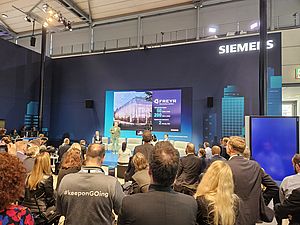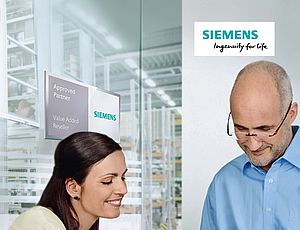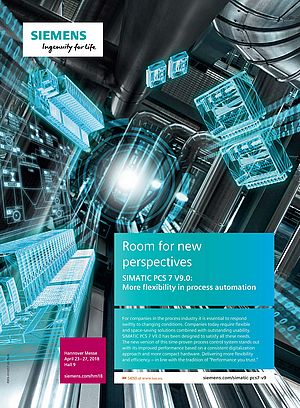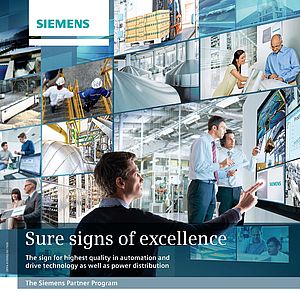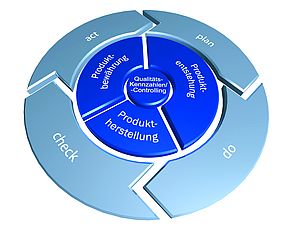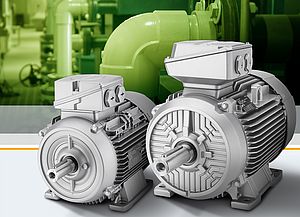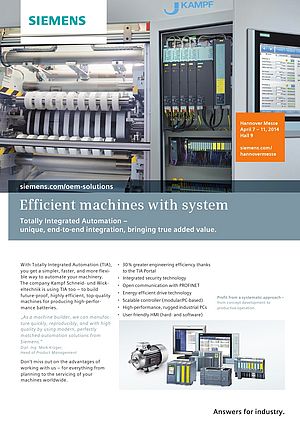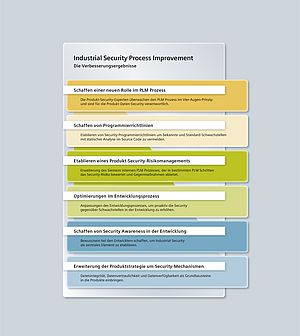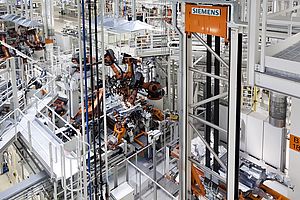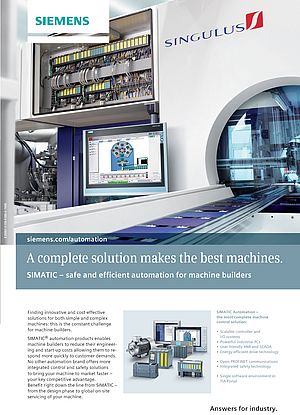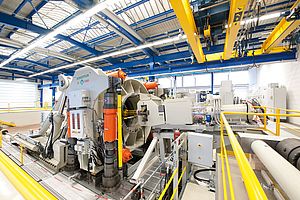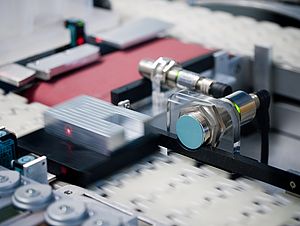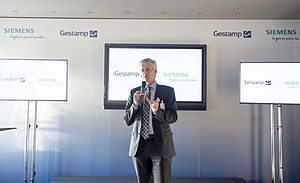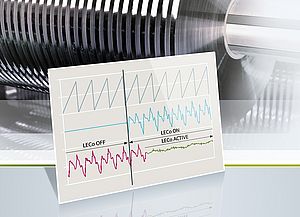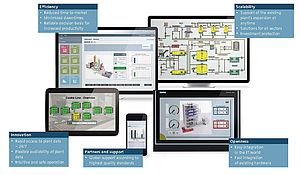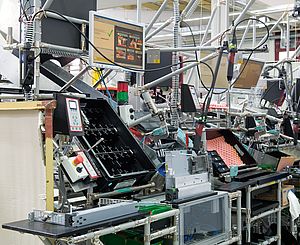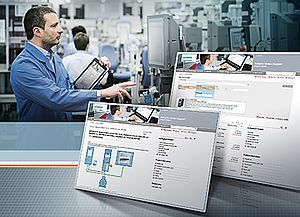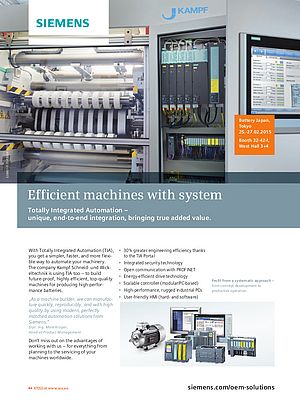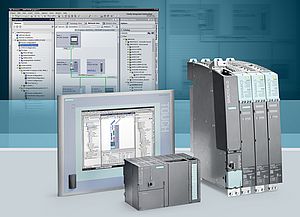Digital infrastructure provides the basis for new digital services or digital production concepts. It contains the platform level on the one hand, which provides the run environment for applications and the "data lake" for saving data. The second element of the digital infrastructure is the networking level, which provides the required connections between sensors in the field and the cloud-based applications. The requirements are stringent: In addition to high availability and guaranteed quality of service, flexibility and data security also need to be ensured in the IIoT (Industrial Internet of Things). Flexibility is needed because the requirements can change quickly in the IIoT: New data sources may be needed for each new application, and these data sources need to be accessed without changes to the automation landscape.
Layers and segments
Modern networks provide possibilities for connecting all units of the automation landscape. Network architectures made up of multiple layers and segments are recommended in order to comply with the increased requirements of industrial applications (Figure 1).
The exchange of small data packets within or between machines (machine-to-machine, M2M) is predominant at the machine or cell level (controllers, distributed I/O modules, converters, HMI devices). The transfer distances tend to be short (up to 100 meters). Communication needs to be deterministic, fail-safe, fault-tolerant and secure, all at the same time (Figure 2). Programmable logic controllers (PLCs) are suitable as data sources for the IIoT, because the sensors are generally already connected to the PLC. With the Simatic S7-1500 – Siemens' flagship product – a specific CP1543-1 network module can establish the connection to the IT systems. The individual cells then form more or less autonomous segments in the production landscape.
To guarantee network security, only authorized users are permitted to access the cells at this level (cell protection concept). This can be optimally ensured by dedicated security components such as the Scalance SC-600 industrial security appliances from Siemens, which feature standardized mechanisms such as a firewall and VPN encryption. However, for a comprehensive security architecture, more is needed – such as a product development process that methodically considers the requirements from the beginning. External certifications, e.g. from the French Network and Information Security Agency (ANSSI), prove the effectiveness of the implementation.
At the next level, multiple machines or systems of a production hall are combined and structured into a hall network. In this hall network, optical fiber connections can be recommended due to the greater distances involved. Network components such as the Scalance XM-400 with a transfer rate of up to 1 Gbps which are redundantly connected to one another are suitable for handling the large volumes of data. The advantage of the XM-400 is the modular structure – the devices grow with their tasks.
The Industrial Backbone made up of redundant fiber optic rings in the upper area of the Distribution Layer pools the data of all subordinate areas via redundant (rack) switches and represents the interface to the corporate IT and to the Internet gateway. Firewalls safeguard the transition to the so-called Core Layer, as well as to the industrial computing centers, which process and/or supply the information required at a production site. The Scalance XR-500 switches are the top choice here. At all layers, the use of a network management system such as Sinec NMS is also advisable to enable good and clear monitoring of structures and device numbers.
Communication via wireless
However, data can only be transported to the cloud via such a wired connection if the relevant field device has a communication connection, and big data is also interesting for objects such as transport containers, tools and the actual products made. Various wireless technologies that can close the gap between (Ethernet) communication networks and the real production objects come into play here.
Wireless LAN (WLAN) networks are widely used and are suitable for numerous tasks that – depending on the requirements placed on the bandwidth – can be implemented simultaneously in the same wireless network (Figure 3). The products of the Scalance W series implement industrial requirements relating to ruggedness, flexibility and performance particularly well, and also offer options such as the realization of safety applications (Wireless Safety). WLAN allows data transfer from mobile objects to the cloud – for example for mobile robots for which cabling cannot be realized.
Radio frequency identification (RFID) systems are a second technology in use and real-time locating systems (RTLS) have also started conquering production halls.
Optimum use of technology
However, top-class components alone do not yet create a top-class industrial communication network. A network design that is coordinated to the specific requirements is at least equally as important. For this reason, Siemens offers comprehensive services relating to industrial communication, from training, through consulting and design, all the way to integration and implementation. The combination of future-oriented technology and its optimum use provides the conditions already today for new digital applications in manufacturing companies.


